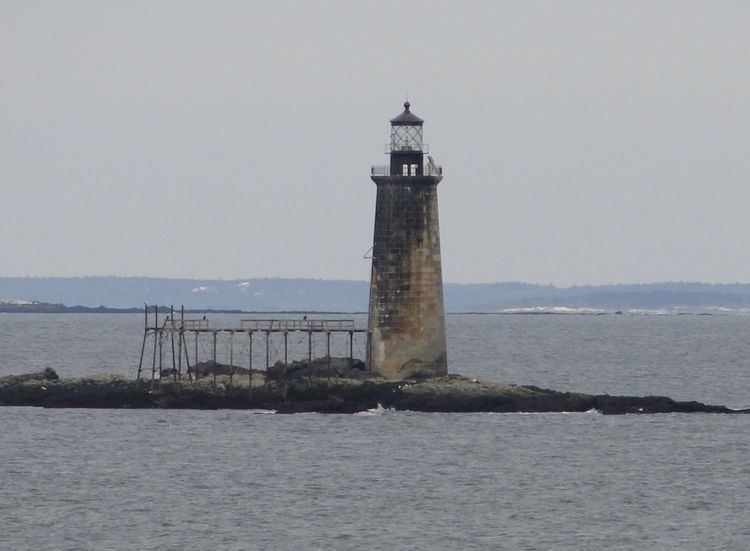Year first lit 1905 Foundation Natural/emplaced Tower shape conical Height 23 m Range 14,816 m Added to NRHP 14 March 1988 | Automated 1959 Construction Granite blocks Opened 1905 Focal height 23 m Year first constructed 1905 | |
 | ||
Location Portland Harbor, Casco bay Similar Spring Point Ledge Li, Halfway Rock Light, Cape Elizabeth Lights, Portland Breakwater Light, Ram Island Light | ||
History of ram island ledge light
Ram Island Ledge Light is a lighthouse in Casco Bay, Maine, United States, marking the northern end of the main channel leading the harbor of Portland, Maine.
Contents
Ram island ledge light
History
The Ram Island Ledges are a series of stone ledges, some of which break the waters at the southern end of Casco Bay, a short way south of Cushing Island. In 1855 an iron spindle was erected to protect sailors from these dangerous underwater ledges. The ledge continued to be the site of repeated shipwrecks. On February 24, 1900 the Allan Line steamship Californian (formerly named the State of California) ran aground on the ledge while en route from Portland to Glasgow, Scotland via Halifax, Nova Scotia. As a result of that accident, the United States Congress appropriated funds to build a lighthouse.
Construction began on May 1, 1903 and was completed in 1905. It is a twin of the Graves Light off Boston. The lighthouse was built of granite quarried from Vinalhaven, Maine. The lighthouse originally included a third-order Fresnel lens. The lighthouse was electrified in 1958, and then automated in 1959. The light was converted to solar power in January 2001. The Ram Island Ledge Light was added to the National Register of Historic Places as Ram Island Ledge Light Station on March 14, 1988, reference number 88000157.
In July 2010, Ram Island Ledge Light was put up for sale to the general public. The minimum bid was $10,000. The property had initially been made available at no charge to other government agencies, educational institutions, and non-profit organizations, but no interest was shown, so bids were opened to the general public. The winning bid, $190,000, came from a Windham surgeon.
